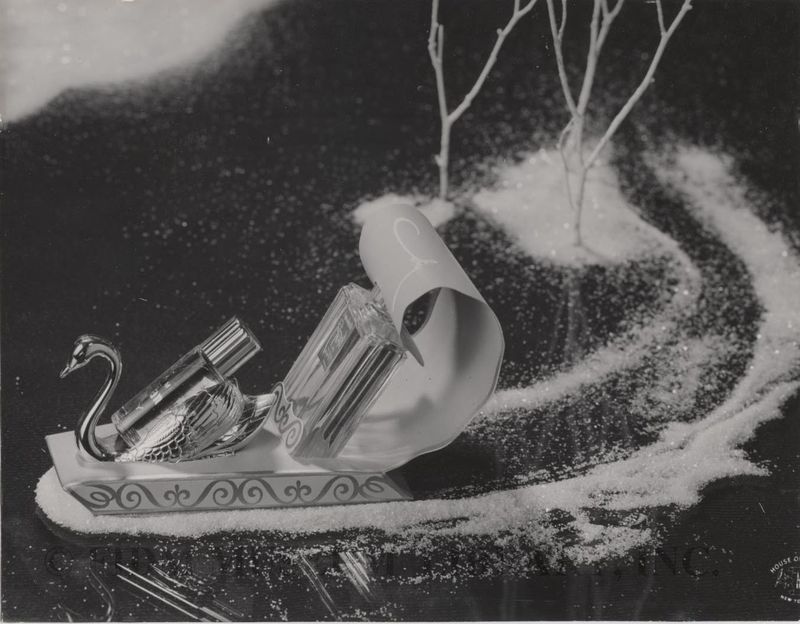According to this article, downtown Los Angeles (home of the FIDM Museum) has experienced snow only 6 times since a January 1949 snowstorm sprinkled downtown with less than 1 inch of snow. The last recorded snow downtown occurred in 1962, so it's unlikely that we'll get any this year. Instead, we'll just have to enjoy this charming promotional photograph for Coty's L'Aimant perfume. The photo features a swan sled carrying two bottles of L'Aimant across a frozen pond dusted with glittering snow.
 L'Aimant by Coty
L'Aimant by Coty
Promotional photograph
c. 1950-59
Gift of the Annette Green Museum at the Fragrance Foundation
F2005.860.1372
Francois Coty (b. 1874) founded his Parisian perfume and cosmetics business in 1904. His first fragrance, La Rose Jacqueminot, became popular via a mishap. When delivering bottles of the scent to a Paris department store, Coty accidentally dropped a bottle, filling the store with La Rose Jacqueminot. Customers drawn by the scent purchased Coty's remaining supply, and the store offered to stock his products. Within two years, Coty was a multimillionaire and one of France's most successful perfumers. By the time of Coty's death in 1934, he had produced more than 30 unique fragrances.
In North America, French fragrance was primarily a luxury product until after World War I. At the end of the war, soldiers returning home purchased French perfume as gifts for their favorite women. Housed in elegant glass bottles made by Baccarat or Lalique, and nestled in silk-lined boxes, Coty's perfumes were especially appealing. Receiving these gifts, women of varied means developed an appetite for this stylish new accessory. French perfumers, including Francois Coty, responded by offering their products throughout North America. In some cases, these fragrances were actually produced in the United States, though their aura was indisputably French.
L'Aimant was introduced in 1927, and was one of the last Coty fragrances that Francois Coty had a hand in producing. A floral fragrance with notes of rose, vanilla, citrus, musk, jasmine and civet, it was said to be Coty's response to Chanel No. 5. According to one Coty biography, L'Aimant and Emeraude, both Coty fragrances, were the only perfumes worn by Mme. Jacques Guerlain, the wife of Francois Coty's primary business competitor.1 Like all Coty fragrances, L'Aimant was available in many forms. Bath salts, talc powder, soaps, perfumed powder, and fragrance bottles of various sizes allowed a range of consumers access to the scent. The image pictured here was probably produced to promote holiday sales of a L'Aimant gift set.
1 Toledano, Roulhac B.& Elizabeth Z. Coty. François Coty: Fragrance, Power, Money. Gretna, Louisiana: Pelican. 2009: 93.

